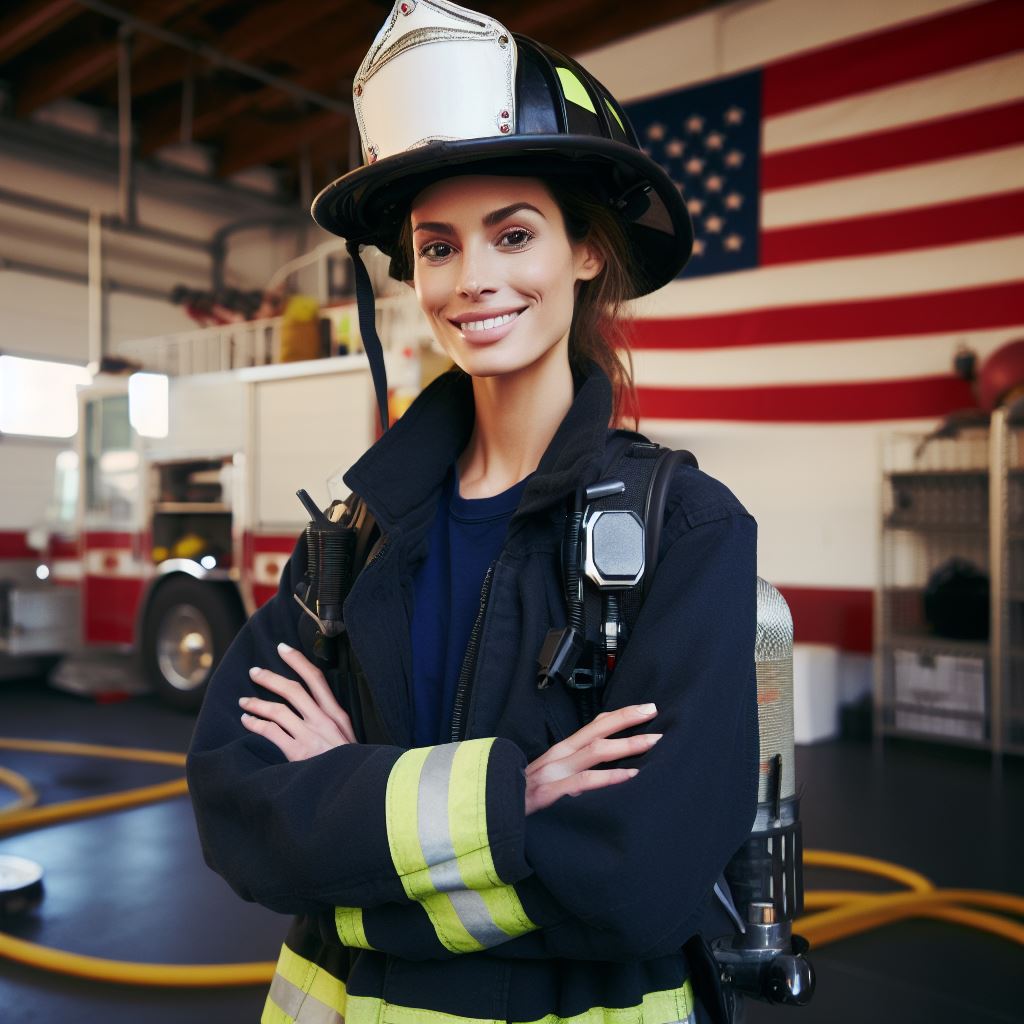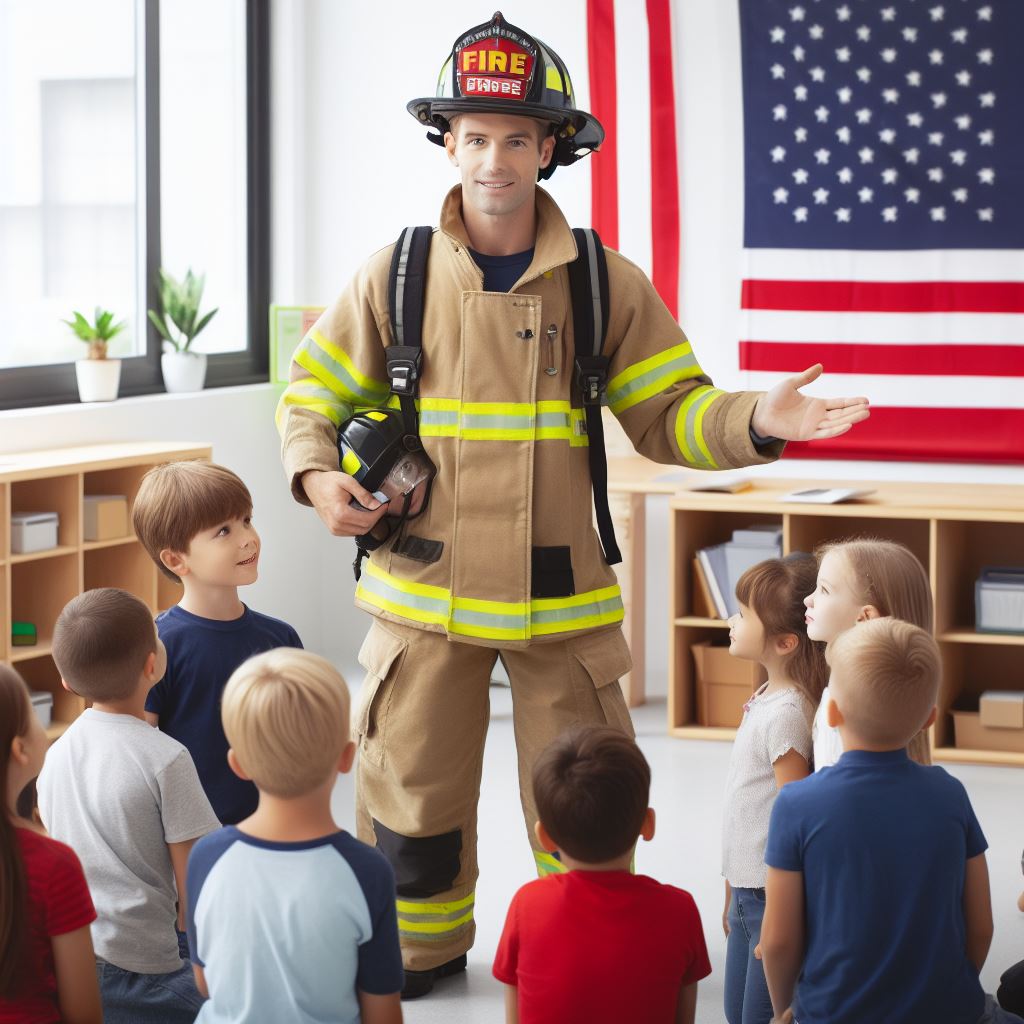Introduction
Fire trucks and apparatus stand as pivotal sentinels, safeguarding U.S. communities and properties from the relentless threat of fire.
Embarking on a captivating exploration, we delve into the rich tapestry of the evolution of fire trucks and apparatus.
This journey transcends mere vehicular metamorphosis; it encapsulates the resilient spirit and dynamic adaptation of firefighting strategies over time.
From the humble beginnings of hand-drawn pumpers to the sophisticated, purpose-built machines of the modern era, each phase reflects an indomitable commitment to enhancing firefighting efficacy.
Our narrative unfurls against the backdrop of historical shifts, technological breakthroughs, and the ever-evolving challenges faced by firefighters.
Join us on this odyssey as we unravel the threads of innovation, resilience, and community service woven into the very fabric of fire trucks’ evolution.
Beyond their utilitarian role, these vehicles symbolize the unwavering dedication of firefighting professionals to embrace progress, ensuring the safety and security of the people they valiantly serve.
Early Fire-Fighting Methods
- Fire-fighting in the early stages of the U.S. was primarily a community effort.
- Bucket brigades, where citizens passed buckets of water, were commonly used.
- Leather buckets were a common tool, thanks to their lightweight and water-resistant qualities.
- Hand pumps were also used to spray water on the fires, but they were limited in their reach.
- Horn-like devices called “fire trumpets” were used to alert people and summon assistance.
- Fire engines during this period were horse-drawn and had limited water storage capacity.
- Firefighters used ladders and hooks to gain access to the upper levels of buildings.
- Early fire-fighting methods heavily relied on human strength and manual labor.
- The use of fire extinguishers, which contained chemicals to suffocate flames, became more common.
- Firefighters also employed sand, blankets, and even wet gunny sacks to smother the flames.
Describe the early methods used to combat fires in the U.S.
During the early days of fire-fighting in the U.S., communities relied on the collective efforts of its citizens.
Bucket brigades were formed, where individuals would pass buckets of water from a water source to the burning structure.
Leather buckets were commonly used due to their lightweight and water-resistant properties.
Hand pumps were also utilized to spray water on the fire, although they had limited reach. Fire trumpets, horn-like devices, were blown to alert people and summon assistance.
Horse-drawn fire engines were employed, but they had limited water storage capacity. Firefighters would use ladders and hooks to access the upper levels of buildings.
Manual labor and human strength were the main assets in battling fires.
Fire extinguishers containing chemicals to suffocate flames and other materials like sand, blankets, and wet gunny sacks were also employed to smother the flames.
The limitations of these methods and the need for improvements
Despite their efforts, the early fire-fighting methods had several limitations that highlighted the need for improvements.
The reliance on bucket brigades meant that the effectiveness of the response was heavily dependent on the proximity of available water sources.
This often led to delays in reaching the fire and made it challenging to combat large-scale blazes.
The use of hand pumps, although innovative for their time, had limited reach and efficiency.
Additionally, the horse-drawn fire engines could not carry substantial amounts of water, making it necessary to establish connections to nearby water sources.
This process was time-consuming and inefficient.
As communities grew, the need for advancements in fire-fighting methods became apparent.
The expanding urban landscapes presented new challenges, such as tall buildings and congested areas.
Manual labor alone was no longer sufficient to combat fires effectively.
The limited reach of hand pumps and the inadequate water storage capacity of fire engines further emphasized the need for improvements in fire-fighting technology.
To address these limitations, inventors and fire-fighting professionals began developing innovative solutions.
This period gave rise to more sophisticated fire engines, including steam-powered engines that could pump water at higher pressures and volumes.
The introduction of fire hydrants allowed for a more reliable and accessible water supply during emergencies.
Moreover, the use of fire hoses improved the effectiveness and range of water delivery to the fire.
Basically, early fire-fighting methods in the U.S. relied on community efforts, bucket brigades, hand pumps, and basic tools to combat fires.
However, these methods were limited in their reach and efficiency, necessitating improvements in fire-fighting technology.
The need for advancements became apparent as communities grew, presenting new challenges.
The development of steam-powered fire engines, fire hydrants, and fire hoses played a crucial role in improving the fire-fighting capabilities of the early U.S. fire service.
Emergence of First Fire Truck
In the early days, firefighting was a challenging task, as there was no specialized equipment or vehicles available to extinguish fires effectively.
However, with the emergence of the first fire truck, the fire service in the United States witnessed a significant transformation.
Let’s explore how the first fire truck was invented and introduced, and the features and capabilities it possessed.
The invention and introduction of the first fire truck in the U.S
- In 1721, the first recorded fire engine, called the “Brigade,” was introduced in New York City.
- The Brigade was a hand-drawn pump that utilized manpower to operate and transport water.
- It was invented by a British architect named Richard Newsham and imported to the U.S.
- The hand-operated pump was mounted on a wheeled carriage and featured a water reservoir.
- The Brigade marked a significant step forward in organizing firefighting efforts and improved efficiency.
The features and capabilities of early fire trucks
- Early fire trucks were primarily horse-drawn and utilized steam-powered pumps to expel water.
- These pumps were capable of generating higher water pressure than hand-operated pumps.
- Fire trucks often had ladders, hooks, and buckets attached to the carriage to aid firefighting efforts.
- The steam-powered fire trucks required skilled personnel to operate the complex machinery.
- Some early fire trucks even had large bells or sirens to alert people of their presence on the streets.
- These trucks were built with a spacious hose bed, allowing firefighters to carry long hoses for firefighting.
- As technology advanced, fire trucks began incorporating chemical tanks to store fire-extinguishing chemicals.
- The introduction of motorized fire trucks in the early 20th century greatly increased their speed and efficiency.
- Early motorized fire trucks had stronger engines, enabling firefighters to reach the scene of a fire quickly.
- These trucks were often equipped with powerful water pumps, capable of spraying water over long distances.
The debut of the first U.S. fire truck marked a pivotal moment in firefighting history, revolutionizing the industry.
This innovative vehicle drastically improved response times by transporting firefighters and equipment swiftly to fire locations.
Early fire trucks introduced features like ladders, hooks, and buckets, laying the foundation for modern apparatus.
Steam-powered pumps, a groundbreaking addition, increased water pressure, enhancing firefighting effectiveness.
The evolution continued with motorized fire trucks, offering heightened speed and maneuverability.
This allowed faster on-scene arrival, significantly improving firefighting efficiency.
Advanced water pumps enabled the dispensing of large volumes over greater distances.
From the early Brigade to contemporary motorized counterparts, each development has elevated firefighting capabilities, making the process more efficient and effective.
Read: Balancing Personal Life & Policing: Officer Stories
Transition to Motorized Fire Apparatus
In the late 19th century, a transition occurred in the fire service industry in the United States. The once popular horse-drawn fire trucks were gradually replaced by motorized fire apparatus.
This shift from traditional horse-drawn equipment to motorized vehicles brought significant advantages and advancements to firefighting operations.
The shift from horse-drawn fire trucks to motorized fire apparatus
- The horse-drawn fire trucks, although effective at the time, had several limitations.
- One major drawback was the reliance on horses, which required trained personnel and special care.
- Horses needed constant attention, feeding, and rest, making them unpredictable in emergency situations.
- Maintaining a large number of horses was expensive and time-consuming for fire departments.
- Furthermore, horses were limited in their endurance and speed, hindering response times.
The advantages and advancements brought by motorized fire apparatus
- The introduction of motorized fire apparatus revolutionized the fire service industry.
- The adoption of motor vehicles eliminated the need for horses, reducing costs and increasing efficiency.
- Motorized fire apparatus allowed firefighters to respond to emergencies more rapidly.
- Fire departments now had the ability to install powerful engines in these apparatus, enabling greater water capacity.
- This increased water capacity enhanced the effectiveness of firefighting efforts.
- Motorized fire trucks were equipped with sirens and horns, helping alert pedestrians and clear traffic.
- The improved mobility of motor vehicles allowed firefighters to reach narrow streets and remote locations easily.
- They also featured large storage compartments for carrying advanced firefighting equipment and tools.
- Additionally, motorized fire apparatus had advanced pump systems capable of delivering water at high pressures.
- Such advancements enabled firefighters to extinguish fires more effectively and efficiently.
- Motorized fire vehicles were designed with larger and more durable wheels, ensuring better traction on various terrains.
- The vehicles’ sturdy construction aided in transporting heavy equipment and accommodating more firefighters.
- The adoption of motorized fire apparatus led to innovations in equipment and technology.
- Fire departments could now invest in specialized tools like hydraulic rescue tools and aerial ladder trucks.
- The introduction of aerial ladder trucks enabled firefighters to reach higher levels of buildings for rescue and firefighting operations.
- The availability of motorized fire apparatus provided firefighters with a safer working environment.
- The ability to transport injured victims quickly to hospitals enhanced their chances of survival.
- With the increased mobility and extended range of motorized fire apparatus, neighboring departments could collaborate more effectively during emergencies.
- Mutual aid agreements and joint response efforts became more feasible and dependable.
- The transition to motorized fire apparatus marked a significant milestone in the evolution of firefighting technology.
Revolutionizing Firefighting: From Horses to Motorized Efficiency
Ultimately, the shift from horse-drawn fire trucks to motorized fire apparatus brought numerous advantages and advancements to the fire service industry in the United States.
The introduction of motor vehicles eliminated the limitations associated with horses, resulting in increased efficiency, rapid response times, and improved firefighting capabilities.
The advancements in technology and equipment, coupled with the enhanced mobility of motorized vehicles, paved the way for safer and more effective firefighting operations.
Read: Rituals and Traditions in U.S. Firefighting Culture

Technological Advancements in Fire Trucks and Apparatus
Introduction of Specialized Firefighting Equipment
- Fire departments have introduced specialized equipment to enhance their firefighting capabilities.
- These advancements include tools specifically designed for different types of fire emergencies.
- Specialized equipment helps firefighters to respond more effectively and efficiently to various situations.
- Some examples of specialized firefighting equipment include breathing apparatus, thermal imaging cameras, and chemical hazard suits.
- The introduction of these tools has significantly improved the safety and effectiveness of firefighting operations.
Technological Innovations in Fire Trucks and Apparatus
- Aerial ladders have been one of the significant technological innovations in fire truck design.
- Aerial ladders allow firefighters to reach heights and access areas that were previously difficult to reach.
- These ladders can be extended to several stories, enabling firefighters to rescue people trapped in high-rise buildings.
- Pumps have also undergone significant technological advancements in fire trucks.
- Modern fire truck pumps are capable of delivering high-pressure water streams to extinguish fires more efficiently.
- These pumps can quickly fill up the tanks with water, allowing firefighters to stay longer at the scene.
- Communication systems have played a crucial role in enhancing coordination and safety during firefighting operations.
- Advanced communication systems allow firefighters to communicate with each other and receive real-time updates.
- This enables better coordination between different units and ensures a more organized approach to firefighting.
- Fire trucks are now equipped with state-of-the-art communication devices, such as two-way radios and GPS systems.
Most importantly, the evolution of fire trucks and apparatus in the United States has seen significant technological advancements.
Specialized firefighting equipment has been introduced to enhance the capabilities of fire departments.
Technological innovations such as aerial ladders, pumps, and communication systems have greatly improved the effectiveness and safety of firefighting operations.
These advancements continue to play a vital role in the modern firefighting industry, enabling firefighters to respond to emergencies more efficiently and save lives.
Read: Rituals and Traditions in U.S. Firefighting Culture
Modern Fire Trucks and Apparatus
Characteristics and Capabilities of Modern Fire Trucks and Apparatus
Modern fire trucks and apparatus have come a long way since their early iterations. Highly advanced and efficient, they possess several key characteristics and capabilities:
- Enhanced Engine Performance: Newer models are equipped with powerful engines capable of generating increased horsepower for better acceleration.
- Improved Water Pumping Systems: Modern fire trucks have robust water pumping systems, enabling high-pressure delivery for effective firefighting.
- Increased Water Capacity: These trucks are designed to carry larger amounts of water, ensuring firefighters have enough supply for firefighting operations.
- Enhanced Hose Carriages: Advanced apparatus feature well-organized and easily accessible hose storage compartments, saving valuable response time.
- Better Maneuverability: With improved chassis design and steering mechanisms, modern fire trucks can navigate through tight spaces efficiently.
- Specialized Equipment Storage: These trucks incorporate dedicated compartments for storing various firefighting and rescue tools, ensuring quick access when needed.
Incorporation of Advanced Safety Features and Equipment
Along with improved characteristics, modern fire trucks and apparatus boast a myriad of advanced safety features and equipment to protect firefighters and increase operational effectiveness:
- Integrated Thermal Imaging Cameras: These cameras assist firefighters in locating victims and hot spots within burning structures, enhancing search and rescue operations.
- Emergency Lighting and Sirens: Fire trucks come equipped with highly visible emergency lighting and loud sirens to alert others on the road and aid response time.
- Automatic Vehicle Location Systems: Advanced GPS technology allows command centers to track fire trucks in real-time, ensuring efficient deployment and incident management.
- Integrated Communication Systems: Modern apparatus have robust communication systems, enabling seamless coordination between firefighters and incident command.
- Advanced Personal Protective Equipment (PPE): Firefighters now have access to advanced PPE, including fire-resistant turnout gear, helmets, masks, and boots.
- Extrication Tools: Specific apparatus carry hydraulic rescue tools, such as Jaws of Life, to extricate victims trapped in vehicles or collapsed structures.
- Improved Ladder Systems: Modern aerial trucks feature enhanced ladder systems that can reach greater heights and carry heavier loads for efficient rescue operations.
- Air Filtration Systems: Fire trucks are equipped with advanced air filtration systems to protect firefighters from hazardous gases and smoke inhalation.
- Vehicle Stabilization Mechanisms: Advanced apparatus include features like automatic leveling systems and stabilizing jacks to prevent rollovers during operations.
Overall, the evolution of fire trucks and apparatus in the United States has significantly enhanced the firefighting capabilities and safety of firefighters.
Modern fire trucks and apparatus, equipped with advanced features and safety measures, play a pivotal role in emergency response.
Transform Your Career Today
Unlock a personalized career strategy that drives real results. Get tailored advice and a roadmap designed just for you.
Start NowRead: Fire Department Hierarchies: From Rookie to Chief
Discover More: Correctional Officer Code of Conduct
Future Trends and Innovations
Exploring potential future developments in fire truck technology
- Integration of advanced communication systems to enhance coordination and response time.
- Implementation of autonomous driving technology to improve maneuverability and vehicle control.
- Development of lightweight materials for enhanced speed and agility without compromising safety.
- Incorporation of advanced sensors and imaging systems to provide real-time situational awareness.
- Integration of drone technology for aerial surveillance and data gathering in rescue operations.
- Adoption of advanced firefighting systems for improved efficiency and effectiveness in extinguishing fires.
- Exploration of alternative power sources, such as hybrid or electric engines, for eco-friendly operation.
- Development of self-contained breathing apparatus with advanced filtration systems for firefighter safety.
- Integration of augmented reality technology to provide enhanced visualization and guidance during operations.
- Deployment of robotics for hazardous material handling and remote operation in high-risk scenarios.
The incorporation of green technologies and sustainability in fire apparatus
- Implementation of solar panels or hybrid power systems to reduce fuel consumption and emissions.
- Adoption of energy-efficient LED lighting for improved visibility and reduced power usage.
- Integration of regenerative braking systems to capture and store energy during vehicle deceleration.
- Utilization of recyclable and sustainable materials in the construction of fire apparatus.
- Incorporation of water-saving technologies, such as high-pressure nozzles and efficient sprinkler systems.
- Exploration of alternative firefighting agents that are less harmful to the environment.
- Installation of idle reduction systems to minimize engine idling and decrease carbon footprint.
- Implementation of smart systems to optimize resource allocation and reduce wasteful practices.
- Integration of automatic shut-off systems to prevent unnecessary energy consumption.
- Incorporation of training and education on sustainable practices to promote environmental responsibility among firefighters.
In general, the future of fire truck technology holds great potential for advancements that can revolutionize firefighting operations.
The integration of advanced communication systems, autonomous driving technology, and lightweight materials can greatly improve coordination, response times, and maneuverability.
Additionally, the incorporation of green technologies and sustainability in fire apparatus can help reduce fuel consumption, emissions, and environmental impact.
With innovative developments and a focus on eco-friendly solutions, the fire service industry can contribute to a more sustainable and resilient future.
Discover More: The Thin Blue Line: Brotherhood & Sisterhood in Blue
Conclusion
Throughout the history of the United States, fire trucks and apparatus have evolved significantly.
From horse-drawn hand pumps to modern-day aerial ladder trucks, advancements in fire-fighting equipment have greatly enhanced public safety.
The evolution of fire trucks and apparatus has allowed firefighters to respond more efficiently and effectively to emergencies.
These advancements have also improved the safety of firefighters themselves, protecting them in hazardous situations.
The introduction of motorized vehicles and specialized equipment has increased the speed and capabilities of fire departments.
The development of aerial ladder trucks and hydraulic platforms has provided firefighters with greater access to high-rise buildings and increased their ability to rescue individuals in dangerous situations.
Additionally, the integration of advanced technologies, such as thermal imaging cameras and advanced communication systems, has further improved fire-fighting operations.
It is crucial to recognize the importance of these advancements in fire-fighting equipment, as they directly impact public safety.
Fire trucks and apparatus play a vital role in preventing and mitigating the damage caused by fires and other emergencies.
By investing in the continuous development and improvement of fire-fighting equipment, we can ensure the safety of both firefighters and the communities they serve.
The evolution of fire trucks and apparatus in the U.S. has been indispensable for protecting lives and property.
[E-Books for Sale]
The Big Book of 500 High-Paying Jobs in America: Unlock Your Earning Potential
$19.99 • 500 High-Paying Jobs • 330 pages
Explore 500 high-paying jobs in America and learn how to boost your career, earn more, and achieve success!
See All 500 High-Paying Jobs of this E-Book
1001 Professions Without a Degree: High-Paying American Jobs You Can Start Now
$19.99 • 1001 Professions Without a Degree • 174 pages
Discover 1001 high-paying jobs without a degree! Unlock career tips, skills, and success strategies for just $19.99!




